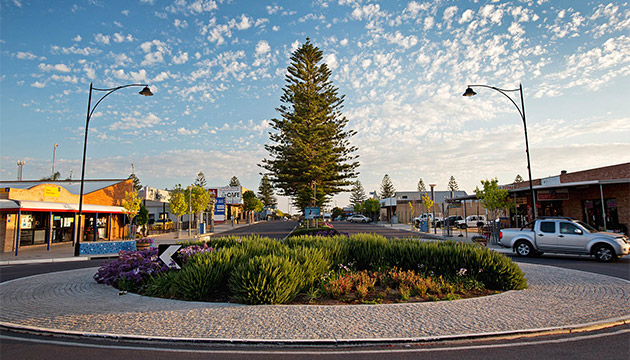With pristine beaches and some of the best fishing in the country, it's no wonder Ceduna is a tourist mecca.
Story By Nathan Dyer
There's a flurry of activity at Peter ‘Baldy’ Mullan’s Ceduna fish factory and the knives of local fishermen Nick and George Karayirnnis flash in the soft window light as they process a pile of King George whiting and shark.
It’s hard work but the hands of the two Greek-born brothers move like clockwork as they handle the morning’s catch, which can be up to 200 kilograms. “People buy fish from here and they can taste the difference,” George declares enthusiastically. As well as fish, local waters are rich in rock lobster, prawns and abalone. Peter has fished the waters off Ceduna for the past 25 years and says the town’s reputation for seafood is Australia-wide. “I’ve got customers who come back from 10 years ago,” Peter says. He is particularly enthusiastic about the King George whiting. “You can store our whiting in the freezer for 12 months without affecting the taste,” he says. Nick and George nod in agreement.
Located on the Eyre Peninsula, 770 kilometres north-west of Adelaide, Ceduna is nestled on the edge of the Nullarbor Plain and the Great Australian Bight. Home to the Wirangu Indigenous people for thousands of years, the town’s name derives from the Aboriginal word ‘tjutjuna’, which means to sit down and rest. The region was first discovered by Europeans with the arrival of Dutch sailors in 1627 but remained unsettled until 1889 when pastoralist and businessman William McKenzie established farming operations at nearby Denial Bay. The town of Ceduna was founded in 1901. With the arrival of a train line in 1915, it soon developed into a key port for gypsum, grain and stock. In 2011, the town’s Port Thevenard exported 1.8 million tonnes of gypsum, 130,000t of salt, 140,000t of grain and 600,000t of mineral sands, and unloaded 1800t of fish.
Despite the local fishermen’s enthusiasm for whiting, it’s another product of the sea for which the town is most famous. Known as the Oyster Capital of Australia, Ceduna’s passion for the succulent shellfish is showcased each October during the annual Oysterfest when 10,000 people gather to enjoy live music, local food and wine, and activities such as the oyster opening and eating competition. Standing outside his shed at Denial Bay – 14km west of town – oyster farmer Max Lowe explains that the region’s shallow, nutrient-rich waters help produce a superior product. Although oysters are grown all along the Eyre Peninsula, Max reckons Ceduna’s take the cake. “Coffin Bay reckon they’ve got the best waters, but I think we do,” he says.
This Story is from Issue #87
Outback Magazine: Feb/Mar 2013









